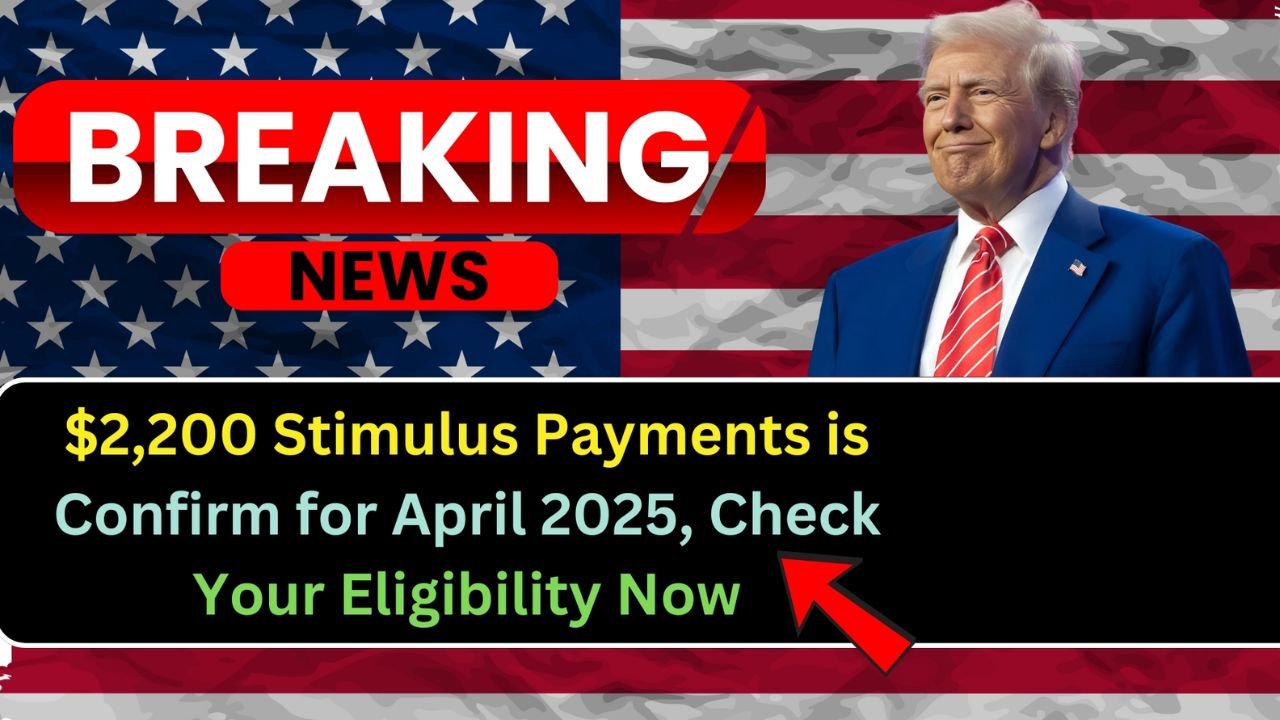As Americans continue navigating the post-pandemic economic landscape, relief measures are once again on the table in Washington. Recent discussions suggest that a new $2200 stimulus payment may be issued as soon as April 2025, providing much-needed financial relief for eligible households. In this article, we’ll dive into the latest updates, proposed eligibility criteria, and potential impacts of the $2200 stimulus payments.
Current Status of the $2200 Stimulus Payment Proposal
The proposal for $2200 stimulus payments has been gaining traction in political circles and the media. While this measure is still under discussion, as of March 2025, it has not yet been enacted into law. Congressional committees are actively reviewing the proposal as part of broader economic relief packages aimed at easing financial pressures on American families.
Several lawmakers, from both parties, are pushing for direct payments, recognizing that inflation, housing costs, and other economic challenges continue to strain family budgets. One representative noted, “Direct payments are an immediate way to offer financial relief to households still dealing with the economic fallout from the pandemic.”
Eligibility Requirements for the $2200 Stimulus Payments
Though final eligibility criteria will be decided upon when the legislation passes, discussions suggest the following guidelines for the potential April 2025 payments:
- Income Thresholds: To qualify for the full $2,200 payment, individuals must meet certain income limits:
- Single filers with an adjusted gross income (AGI) under $75,000
- Heads of household with an AGI under $112,500
- Joint filers with an AGI under $150,000
For higher earners, the payments would phase out gradually, with no payments for those earning above $100,000 (individuals), $150,000 (heads of household), or $200,000 (joint filers).
Also Read – How to Check Your SASSA R350 Payment Status Online in March – Simple Guide
- Dependents: Households with dependents would receive an additional $500 per dependent, regardless of age—a shift from earlier stimulus programs that had age restrictions.
- Residency and Citizenship: Recipients must:
- Be U.S. citizens or qualifying resident aliens
- Not be claimed as a dependent on someone else’s tax return
- Have a valid Social Security Number
Economic Context Behind the $2200 Stimulus Proposal
The proposed $2200 stimulus payments come at a time of mixed economic recovery. While unemployment rates have stabilized, many households still face mounting pressures from inflation, housing costs, and the resumption of student loan payments. The average American family now spends about 37% of their income on housing, a rise from 30% a decade ago.
Additionally, essential goods like food, healthcare, and energy have seen price hikes that outpace wage growth. The $2200 stimulus payment is designed to alleviate some of these ongoing financial burdens.
Distribution Methods and Timeline for the $2200 Stimulus Payments
If approved, the distribution of $2200 stimulus payments will likely follow similar methods to past programs:
- Direct Deposits: Taxpayers with banking information on file with the IRS will receive payments directly.
- Physical Checks: For those without direct deposit information on file, physical checks will be mailed.
- EIP Cards: Some recipients may receive Economic Impact Payment (EIP) cards.
The payments are expected to begin by mid-April 2025, with most recipients receiving funds by the end of May 2025.
Potential Economic Impact of the $2200 Stimulus Payments
Proponents of the $2200 stimulus payments argue that this injection of funds could have several positive effects on the economy, including:
- Boosting Consumer Spending: The extra cash could stimulate consumer spending, particularly benefiting sectors still recovering from pandemic-related disruptions, such as retail, hospitality, and services.
- Debt Reduction: Many households are likely to use the payments to pay down credit card debt, improving their financial stability in the long run.
- Housing Stability: For millions of households struggling with housing costs, the $2200 stimulus payment could help prevent evictions and foreclosures.
Congressional Debate and Political Considerations
While many lawmakers support the $2200 stimulus payments, budget concerns remain a point of contention. Some argue that the cost of the program could range between $365 billion to $410 billion, depending on eligibility criteria. Discussions are ongoing about how to fund the program, with some legislators pushing for more targeted relief to ensure the payments reach those who need it most.
State-Level Supplements
In addition to the potential federal $2200 stimulus payments, some states are planning their own relief measures. For example:
- California: $600 for residents earning under $75,000
- New York: $425 for families with children under 18
- Michigan: $500 for essential workers
These state supplements, while independent of the federal program, could provide extra financial relief to qualifying residents.
Also read: Lincoln Wheat Penny Valued at $3 Billion
Financial Planning Tips
As discussions about the $2200 stimulus payments continue, financial advisors are offering guidance to help Americans make the most of this potential windfall. Some recommended strategies include:
- Paying down high-interest debt
- Building emergency savings
- Preparing for future financial needs, like retirement or education
For households with more stable finances, advisors suggest considering long-term financial goals, such as retirement contributions or investments in education.
Conclusion: Stay Informed About the $2200 Stimulus Payments
The proposal for $2200 stimulus payments is still under review, and its final details are yet to be decided. However, if approved, this relief could offer significant support to millions of American households still struggling with the economic impacts of the pandemic. Be sure to stay updated on official announcements to ensure you know when and how to access your $2200 stimulus payment.
For more information on eligibility and how to prepare for the potential payment, watch for updates from the IRS and government officials.
Some Important Link
| Telegram Group | Click Here |
| WhatsApp Group | Click Here |
| Home Page | Click Here |
